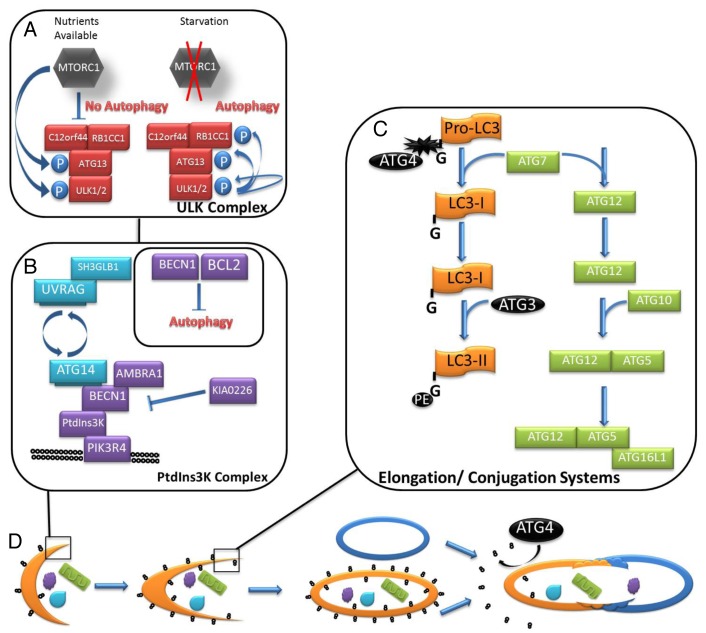Figure 1. The core machinery of autophagy. Autophagy is a complex degradation process in which general cytoplasm or organelles are engulfed by a double-membrane bound structure and degraded and recycled following fusion with a lysosome. (A) Dephosphorylated ULK1 dissociates from the MTOR complex and phosphorylates itself, ATG13 and RB1CC1 to induce the nucleation phase. (B) The PtdIns3K complex is assembled at the site of the nascent autophagosomal membrane. UVRAG and ATG14 are found in BECN1 complexes in a mutually exclusive manner. BECN1 is inhibited when bound by anti-apoptotic BCL2, which results in downregulated autophagy. (C) The two ubiquitin-like conjugation systems essential for membrane elongation are outlined schematically. (D) The autophagosomal membrane (orange crescent) is studded with LC3–PE (stylized in black). The membrane elongation is dependent on the ATG12–ATG5-ATG16L1 conjugation system. During fusion with the lysosome (blue oval) LC3–PE associated with the outer membrane is cleaved and recycled by ATG4 while LC3–PE associated with the inner-membrane is degraded by lysosomal proteases along with the cargo of the autophagosome.

An official website of the United States government
Here's how you know
Official websites use .gov
A
.gov website belongs to an official
government organization in the United States.
Secure .gov websites use HTTPS
A lock (
) or https:// means you've safely
connected to the .gov website. Share sensitive
information only on official, secure websites.
